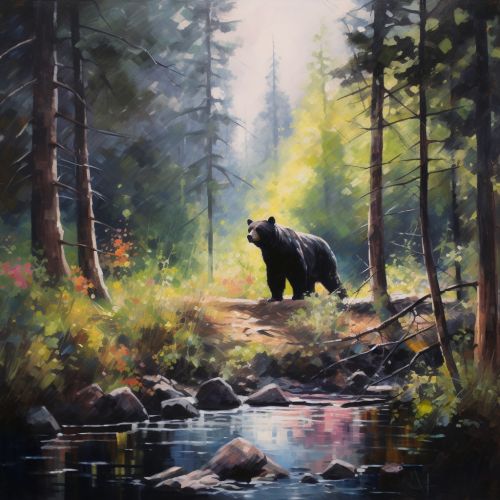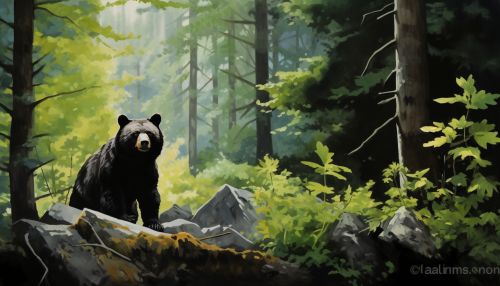Black Bear
Taxonomy and Evolution
The Black Bear (Ursus americanus) is a medium-sized bear native to North America. It is the continent's smallest and most widely distributed bear species. The black bear is a member of the family Ursidae, one of the eight living families of the order Carnivora. The black bear's closest relatives are the brown bear and the polar bear.


Black bears are considered a monotypic species, meaning they do not have any recognized subspecies. However, there are several regional variations in size and coloration. These variations are often considered to be adaptations to specific environments and food sources.
Description
Black bears are named for their black fur, but their color can vary, ranging from black to cinnamon brown. In rare cases, black bears can also be white or blonde; these color variations are often found in western Canada and are sometimes referred to as "Kermode" or "Spirit" bears.
The black bear's body is heavy-set. The head is broad with a straight facial profile and small eyes. The ears are rounded and proportionately large. Black bears have a short tail and their feet are equipped with strong claws for digging and climbing trees.
Distribution and Habitat
Black bears are found throughout North America, from northern Alaska east to Newfoundland and south to central Mexico. They inhabit a wide range of habitats, from coastal marshes and mountainous alpine regions to dense forests and deserts. Black bears are highly adaptable and can live in close proximity to human developments with relative ease.
Diet
Black bears are omnivorous and have a diverse diet. They eat a variety of foods, including berries, fruit, honey, nuts, insects, small mammals, and carrion. They are also known to eat human-provided sources of food such as garbage, pet food, and bird seed.
Behavior
Black bears are solitary animals, with the exception of mothers and cubs. They are primarily active during the night but can be seen during the day. Black bears are excellent climbers and swimmers. They hibernate during the winter months, during which time they live off their fat stores.
Reproduction
Black bears mate during the summer months. Females give birth to one to three cubs in late winter. Cubs stay with their mother for about two years, during which time they learn crucial survival skills.
Conservation
Black bears are listed as a species of least concern by the International Union for Conservation of Nature (IUCN). However, they face threats from habitat loss and hunting. Conservation efforts for black bears include habitat preservation and hunting regulation.
